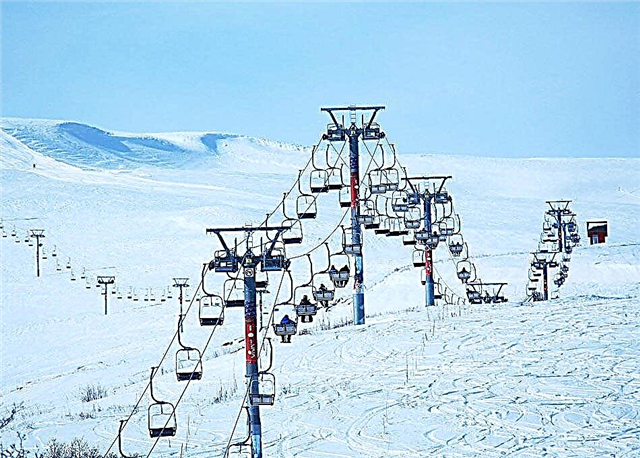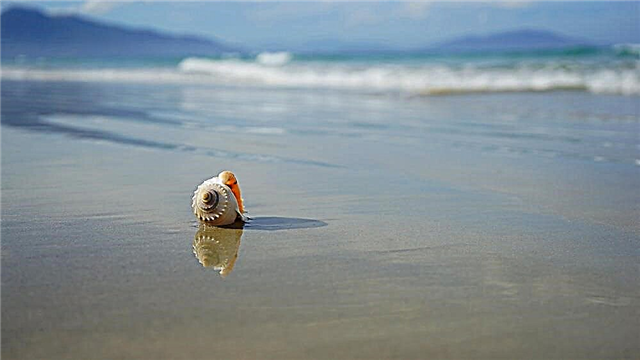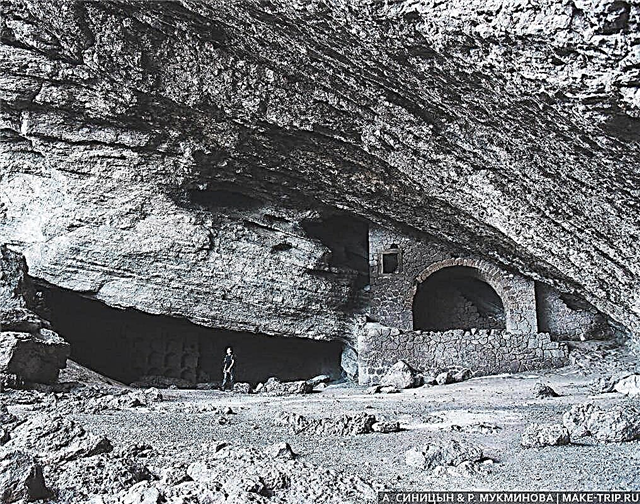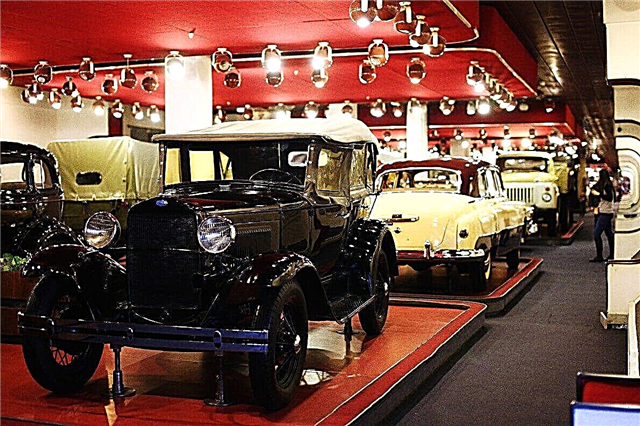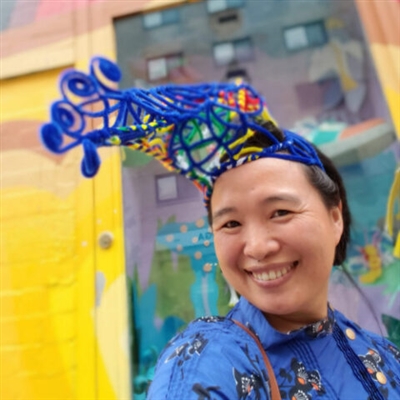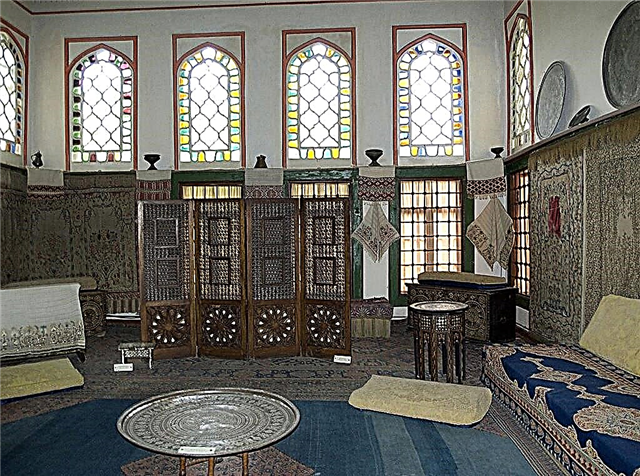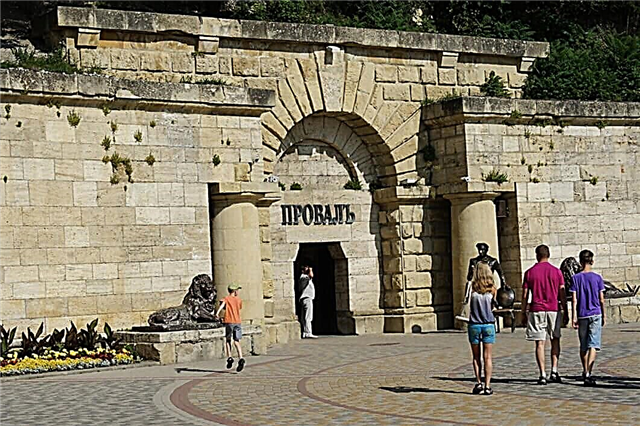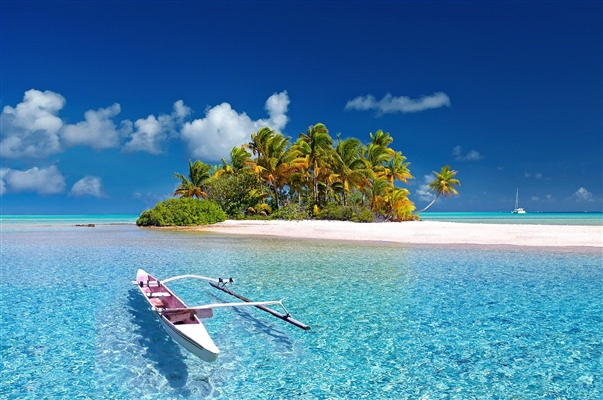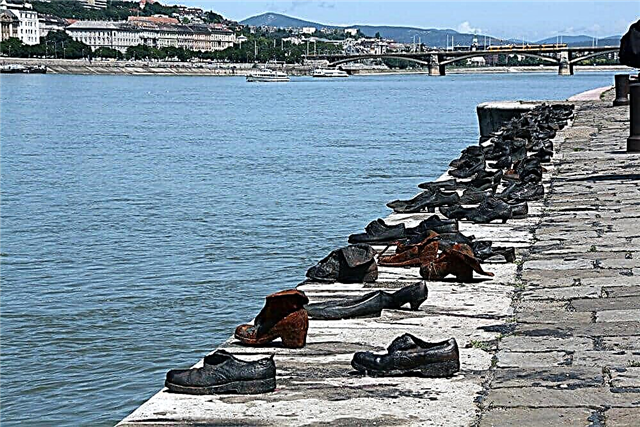The history of Hungary goes back over a thousand years. From the moment the Magyar tribes settled in Europe to the present day, these territories have gone through a lot. The country had to defend its freedom more than once and fight against the conquerors. Budapest has also been constantly evolving. Its main achievement is the unification of three constituent parts into one city, the main ones of which are Buda and Pest.
Local monuments - open-air history textbooks. During the period of decommunization, the appearance of the streets changed, but the monuments were not destroyed for the most part, but were brought to one place - to the theme park “Memento”. There are also several controversial monuments in the city, which is why they only attract more tourists. This is especially true of the sculptural composition "Waiting", dedicated to prostitutes.
Historical and modern monuments of Budapest
List of the most famous monuments and sculptures in the city.
Millennium Monument of Hungary
The main memorial complex of the capital. The central part of the composition is a 36-meter column with an archangel mounted on it. At its base are sculptures of the leaders of the Magyar tribes - the ancestors of modern Hungarians. The two semicircular colonnades are also decorated with monuments with historical references. And the memorial plate honors all who gave their lives for the freedom and independence of their people.

Danube embankment shoes
An unusual composition is dedicated to the Jews who were shot during the Second World War. Shoes of different sizes and styles are placed on the embankment near the parliament building. They are made of bronze, although from a distance they are indistinguishable from the real ones. Before the war, almost a quarter of the city's population belonged to the Jewish diaspora. Many of them were killed right on the Danube, others ended up in ghettos or concentration camps.

The Statue of Liberty
Installed on Mount Gellert in front of the Citadel. The height of the pedestal is 26 meters, and the height of the female sculpture with a palm branch in her hands is 14 meters. The statue symbolizes the victory over fascism. Nearby is a torch bearer and a dragon fighter. During the period of active decommunization of the country, the inscription on the monument was changed. Even earlier, the propeller disappeared from the hands of the statue, so as not to evoke associations with the controversial figure Miklos Horthy.

Monument to St. Stephen I
It has been located within the walls of the Fisherman's Bastion since 1906. Timed the installation to celebrate the millennium of the state. The author of the monument is Alaios Stroblem. Among the figures on the bas-reliefs, one can also see the sculptor's self-portrait. Saint Stephen I is the founder of Hungary. Equestrian sculpture refers to important events in the country, including the adoption of Christianity and the struggle for independence.
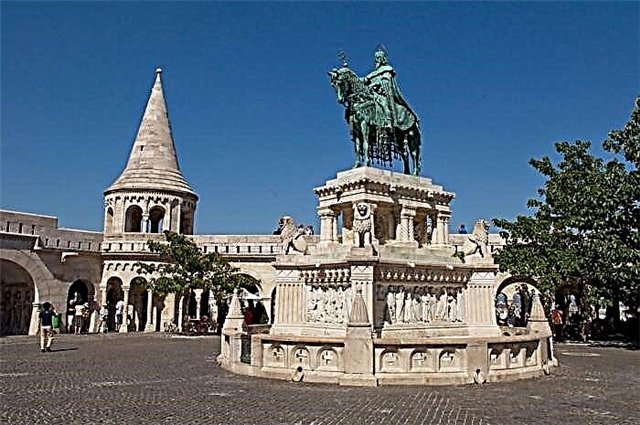
"Anonymous"
One of the most mysterious and unusual monuments in Budapest. The identity of the Anonymous author is covered with a veil of secrecy. It is known that he lived during the reign of King Bela III and was a chronicler or chronicler. Among other things, he wrote "Acts of the Hungarians" - a book about the history of the settlement of his people in Europe. The monument depicts a seated figure of a man in a wide cloak and with a face hidden behind a hood. He has a pen in one hand and a manuscript in the other.

Column of the Holy Trinity
There are similar monuments in other European cities. The Budapest Column is located in the Holy Trinity Square. At its top is the composition of the same name. Plague pillars were erected to mark the end of pestilence, epidemics and other misfortunes. The monument to the capital of Hungary is no exception. It appeared at the turn of the 17th-18th centuries, when waves of fatal ailments swept across the country.

"Little Princess"
In 1972 Laszlo Marton won the Kotush Prize for this project. He created a sculpture 50 cm high in the image of his daughter. The original was placed in the Hungarian National Gallery, and a copy was installed on the waterfront. From a distance, the monument looks like a boy sitting on a railing in a buffoon's hat. However, this is a girl, and a crown is worn on her head. Tourists rub the knees of the "Little Princess" for good luck.

Monument to Lieutenant Colombo
Installed in 2014. Dedicated to the hero of the detective series popular in many countries. The main role in it was played by Peter Falk. He claimed that his ancestors were from Hungary. This also determined the choice of the site for the monument - Max Falk Street - probably a relative of the actor. The sculptural composition consists of Colombo himself, reflecting on the current investigation, and a dog sitting next to him.

"Boys from Pala Street"
The monument was created based on the eponymous literary work of Ferenc Molnar. The opening of the composition took place in 2007. This is how the local authorities celebrated the centenary of the novel. The monument illustrates one of the first scenes of the book. A group of boys stop after school in a vacant lot to play marbles. They are carried away by what is happening, discussing the strategy and do not notice anything around.

Monument to the soldiers of the Soviet Army
After the war, several monuments on this topic appeared in the city. The obelisk on Freedom Square is the only one that has survived. Until 1958, there was a soldier's burial under it, but the remains of the fallen were transferred to the local cemetery. The monument was restored in 2002, but in 2003 it returned to its original place. The obelisk is periodically attacked by vandals and nationalists.

Monument to Ronald Reagan
President Reagan contributed to the end of the Cold War and Hungary's independence. In 2011, on his 100th birthday, a monument to the American president was unveiled on Freedom Square. Istvan Mate created the Reagan sculpture from numerous photographs. The author has implemented his project as follows: the politician walks towards the American embassy from the government building.

Sculptures in the Park "Memento"
This area can be called an open-air museum. Many monuments of the communist period were brought here. They lost their original semantic value, but remained part of the history and culture of the country. Therefore, it was decided not to destroy the works of art, but to designate a special place for them. The opening took place in 1993. The total number of sculptures is over 40.

Monument to Imre Nagy
The metal composition was originally located near the parliament building. An openwork bridge was thrown across the artificial reservoir. On it stood a man of an intelligent look. Imre Nagy is an important historical figure, not only for Hungary, but also for Russia. There is an assumption that he participated in the execution of the imperial family. In 2018, the monument was removed for restoration, and it will not return to its original place.

"The tree of Life"
The memorial has been located in the courtyard of the Great City Synagogue since 1990. Also known as a memorial to the victims of the Holocaust. Made in the form of a weeping willow made of metal. The names of the Jews who died during the Second World War are inscribed on the leaves of the tree. During the wind, the branches emit a characteristic ringing. The author of the project is Imre Varga. The park around is named after the Swedish diploma of Raoul Wallenberg, who saved many Jews.

Monument to Karl Lutz
During World War II, Karl Lutz was the Swiss consul in Hungary. He helped Jews hide from the Nazis by issuing special certificates. With his direct participation, about 100 thousand people were saved. The Lutz monument is unusual in its execution, it is abstract and full of symbolic meanings. It is noteworthy that the diplomat's contribution to saving the lives of Hungarians was noted only in 1995.

Monument to Saint Gellert
Installed on the mountain of the same name. Gellert came from a noble family, but devoted himself to serving God. He was canonized in 1083. Considered one of the patrons of Hungary. The monument was erected in 1904 at the place where the bishop died. A man bowed before the sculpture of a priest holding a crucifix.It is a symbol of the Hungarian people that pays tribute to Gellert's memory and respect.

"Garden of Philosophy"
The collection of sculptures is located in the northwest of Gellert Hill. They are all executed in the same manner. Some are arranged in a circle, while others are lined up side by side. In the garden there are black monuments to Buddha, Christ, Mahatma Gandhi, Pharaoh Akhenaten, Prophet Abraham, Lao Tzu, St. Francis of Assisi, Bodhidharma. At the top, you can see the composition - the combination of King Buda and Queen Pest.

Monument to a policeman
The official name is "Keeper of the Order". The colorful bronze statue was created by the architect Andras Illes in 2008. At the same time, the monument was erected on a pedestrian street in the Fifth District. The figure of a policeman is made in full growth. He seems to be walking around and closely watching what is happening. Uniform, headdress and sword give out in him the guardian of the law of past centuries.
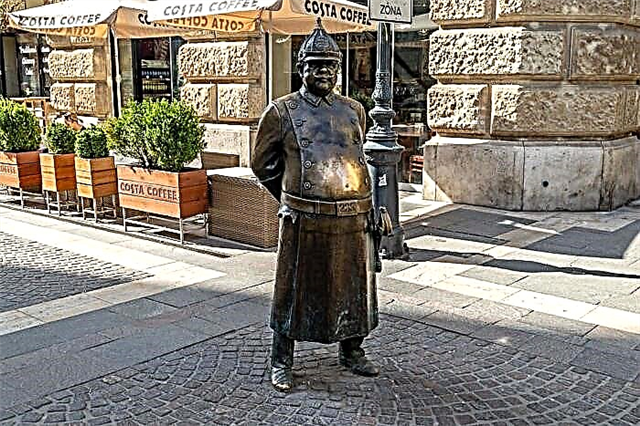
"To the victims of the German occupation"
It appeared in the city in 2014 and caused a lot of controversy. According to activists, the monument distorts the historical truth. He portrays Hungary as a victim of fascism, but ignores the fact that the soldiers of this country themselves collaborated with the Reich. In front of the columns there is a sculpture of a tortured angel, over which an aggressor eagle hovers. Symbolic images make it possible to interpret the idea of the monument in different ways.

"Wheel of Time"
The monument also has a practical application, although it is not relevant in modern times. The Wheel of Time is the largest and most unusual hourglass in Europe. The art object is made of several materials, including safety glass, steel and granite. Ancient techniques and modern technologies have been combined here. The "mechanism" was launched on December 31, 2004. Now, once a year, the wheel makes a revolution to start a new countdown.

Statue of Attila Jozsef
Another work by Laszlo Marton was installed near the parliament building in 1980. Attila Jozsef is a poet who lived at the beginning of the last century. He is depicted tired, sitting on the steps with a hat in his hands and a raincoat, which lies next to him. The sculptor managed to depict the despondency and anguish of the classic of Hungarian poetry, who eventually threw himself under a train at the age of 32. There are talks about the transfer of the monument.

"Girl playing with a dog"
Light monument of the Hungarian capital. Locals call him mischievous and rank him among the best decorations in the city. "A girl playing with a dog" can be found on the embankment near the suspension bridge. Buda and Pest converge here, so there are many tourists here. The bronze dog brought the ball to the child, and the girl reaches after him to again throw his toy to the four-legged friend. Such a composition is a magnet for fans of unusual photos.

Statue of Ferenc Rakoczi
Opened on Lajos Kossuth Square in front of the Parliament building in 1935. Ferenc II Rákóczi is the leader of the liberation war of his people, the national hero of Hungary. The monument was designed by the sculptor Janos Pastor and the architect Denesh Gyorgyi. The prince sits astride a reared horse. Below them is a massive granite pedestal with all the necessary information about the statue.

"Iron curtain"
It is located on Androshi Avenue next to an unusual museum called the House of Terror. The monument is a wall, which is hung with dense rows of chains. In the literal and figurative sense, the authors of the project got an iron curtain. The composition tells about the period when the country's border was closed both at the entrance and at the exit. The monument has inscriptions in several languages, including Russian.

Monument to Count Sandor Karoyi
It is located in a park near the Vaidahunyad castle. Sandor Karoyi lived in the 19th-20th centuries. The count became famous as a politician, member of the Academy of Sciences, founder of a hospital and field marshal. He also pioneered the creation of a consumer and farmer association. Karoya's sculpture was seated on a bench. His hat and cloak are right there. There is a free space on the bench nearby, which allows you to arrange photo sessions.

Kilometer zero stone
The sculpture in the form of a zero and a height of 3 meters is a reference point between any corner of the country and its capital. Initially, the stone statue stood at the Buda castle, but in 1849 it was moved to the Chain Bridge. The appearance of the monument was constantly changing. An ordinary stone was changed to figured compositions, but they either collapsed or were removed for other reasons. The author of the current sculpture, Miklos Borshosh, completed his project in 1975.

Monument to Queen Elizabeth of Bavaria
Collecting money for its creation began immediately after the assassination of the wife of Emperor Franz Joseph I. She is by birth a princess of Bavaria, but after marriage she plunged headlong into the study of the history, language and culture of Hungary. For this reason, she was loved by the people. The competition was won by the project Less often by Hikish and Derdya Zaly. A monument to their work was erected in 1932. After the war and until 1986, the sculpture was gathering dust in a warehouse.

Sculpture by Imre Kalman
Located in front of the building of the Operetta Theater. The flourishing of Viennese opera is associated with the name of Imre Kalman. He was a composer of various genres, but he made his name on the stage of the theater. The sculpture depicts him sitting with a cigarette in his hand on a bench and looking at people entering the room. The monument is bronze, and the bench is metal and has a wide marble stop on one side.

Sculpture of Geza Hofi
Installed in 2004 in front of the theater building a couple of years after the death of the comedian. The monument was made with fiction to emphasize the unusualness of Geza Hofi himself. Sculpture is a symbiosis of two figures: male and female. The woman holds the comedian's head in her hands, and from under his coat, only his legs are visible, as if hovering above the ground. It turned out to be something like a trick-trick. The height of the composition is 2.25 meters, it is made of bronze.

Monument to Sandor Petofi
Opened near the embankment on the square of the same name. Sandor Petofi - poet, revolutionary, democrat, one of the leaders of the revolution of 1848-1849. His birth name is Alexander Petrovich. There are several versions of Petofi's death, including a skirmish with the Cossacks, capture and exile to Siberia. The sculpture of the writer depicts him in full growth with a scroll in his hands declaring some text.

Statue in honor of the struggle for independence
Dated in 1893 and stands in the immediate vicinity of the Fisherman's Bastion. The bronze monument on a high pedestal was created by the Gyorgy Hall. There is no dedication to any specific heroes or events. One of the themes of the statue is the Battle of Buda Castle in 1848. But the heroes who took part in the struggle for the independence of Hungary were also noted. The slogan of the monument reads - "Freedom or death".

Monument to Ferenc Puskash
It appeared on the square of the same name in 2013. Ferenc Puskas is an outstanding footballer, the best in the history of Hungary. He gained fame as a player of Real Madrid (Madrid). In addition, he managed to play in the World Championships for two national teams, which is almost unique in the world of football. The monument is based on the image of Puskash already in adulthood. He is dressed in a formal suit and is stuffing a ball surrounded by children.

Monument to Ignatius Roshkovich
Opened in 2014 on the embankment. The sculptor is Mikhail Kolodko. Ignatius Roshkovich is an artist who became famous for his works on religious themes and paintings in the style of realism. The painter is depicted in front of the canvas, creating another masterpiece. Two years earlier, the original monument was erected in Uzhgorod. The copy appeared in Budapest, not only as a tribute to the master, but also as a symbol of friendship between cities.

Monument to Lajos Kossuth
Located in a public garden near the square of the same name. Lajos Kossuth is a prominent political figure in the country. He served as prime minister and ruler of Hungary. The uprising with his participation was suppressed, so the reformer had to immigrate. Although he died in Italy, he is buried in Budapest. The sculptural composition in honor of Kossuth and other revolutionaries was opened in 1927. The composition consists of 9 snow-white figures.

"Waiting"
A sculptural composition was installed on Fe square. The sculptor Imre Varga dedicated his work to prostitutes. Four female figures stand under umbrellas. They are the personification of the moths of France, Hungary, England and Germany. Initially, the authorities refused the author and did not want to allocate space for a bronze composition. But Varga defended the monument to the last and achieved permission in 1996.


